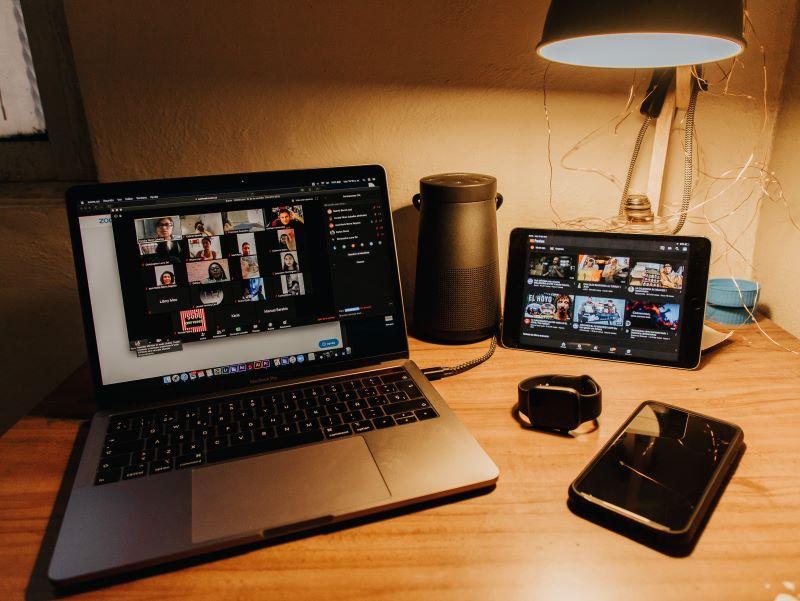
Helping doctoral students build international connections

Global connections and international research collaborations are fundamental to Imperial College London. The online Global Fellows Programme (GFP), a collaboration with Technical University Munich (TUM) and Nanyang Technological University (NTU), provided doctoral students with the opportunity to collaborate with their peers in the UK, Europe and Asia when travel was restricted due to the pandemic. During the programme, students worked in multidisciplinary and multicultural groups to complete project-based activities, culminating in the development of “accelerator project proposals” for research addressing the theme “health, data and technology for society”. Some students extended connections made during the programme by undertaking research visits to the partner organisations.
Based on our experience delivering the online programme, this article sets out practical tips for supporting international links and collaborations between doctoral students.
- Resource collection: New approaches to the internationalisation of higher education
- International partnerships drive SDG progress – how do we support them?
- Strangers in a strange land: how supervisors can support international research students
Connection to wider partnerships agenda
The GFP was funded by a grant designed to further research and education partnerships between the three participating institutions. The grant funding helped secure buy-in from researchers, because it encouraged them to participate as speakers and their students to take part.
An important part of building connections during the programme was for students to share their expertise in a “talent bank” and to explain how they would use their expertise to develop the “accelerator project proposal” and ideas for future research within the GFP theme.
Managing time-zone differences
To account for time-zone differences, synchronous activities took place in the morning for TUM and Imperial and in the afternoon for NTU, while asynchronous activities were managed independently by students.
Encouraging students’ connection and engagement throughout
Activities were interconnected through asynchronous and synchronous components. For example, to support the use of non-technical competencies, such as creativity, students were asked to develop a “prototype” of a culture chamber to support organisms in microgravity conditions based on a real project during asynchronous group work. They then presented the prototypes during the synchronous session. Within a group, each student worked on a specific task with the final product obtained by combining all the students’ work on different tasks. This allocation made students feel responsible for both their task and for the whole group.
These group activities ensured students stayed engaged and connected throughout the programme and continued working together. It created a sense of curiosity between groups who could only see solutions developed by other groups during the synchronous sessions.
Designing pre-course activities to build trust and early connections
Prior to synchronous meetups, channels were set up to enable students to build early connections: participants introduced themselves and shared their technical and non-technical expertise in the “talent bank” mentioned earlier.
These early communications built trust among students and tutors so that when the whole group was brought together live, students already knew each other and were ready to collaborate.
Setting clear expectations for team working
The GFP team defined clear expectations for how participants would interact in an online environment, and identified the potential for miscommunication in an online environment due to language and cultural factors. To address this, as a preparatory activity before the GFP, students were asked to watch videos about intercultural awareness and communication and to share their own experience of researching in an international context.
As a follow up, in the first activity each group developed a complementary set of expectations that included their reflections on the videos. Those expectations were used to facilitate the debrief sessions that followed each activity in the programme.
Creating a virtual space to connect students
Using Microsoft Teams, we created a dedicated Teams Class, where each channel supported an aspect of the programme. So, one channel contained the preparatory activities and each day of the five-day programme was hosted in its own channel.
This system allowed us to organise and manage resources, meetings and asynchronous and synchronous activities, and represented a safe virtual environment in which students could meet, network and discuss their collaborations.
Recruiting students with shared passions to address the global challenge
When advertised to students, the programme’s purpose was made clear: to develop an accelerator research project under the topic, “health data and technology for society.” When selecting students, the programme team identified those who felt passionately about this global challenge and who could contribute technical and non-technical competencies. This shared vision and individual passion facilitated group connections.
Lessons learned
When developing an online programme, it is important to design suitable activities and approaches with a balance of synchronous and asynchronous learning. Although the programme team was initially concerned about whether students would respond to an online programme, we were surprised by students’ willingness to engage with an online community of practice.
Our experience has demonstrated that such programmes can lead to research collaborations and strengthen international partnerships and connections among doctoral students and their institutions. These recommendations aim to provide general guidance to support collaborations and networking in any subject or context; we hope they are useful to you.
Elena Forasacco is senior teaching fellow and director of the Global Fellows Programme in the Graduate School; Laura Bulmer is senior international relations officer, education and mobility; and Laura Lane is head of strategy and operations in the Graduate School, all at Imperial College London.
They have been shortlisted for International Collaboration of the Year in the Times Higher Education Awards 2022. A full list of shortlisted candidates can be found here.
If you would like advice and insight from academics and university staff delivered direct to your inbox each week, sign up for the Campus newsletter


